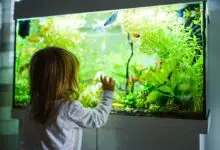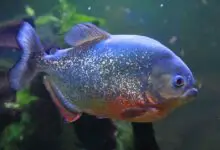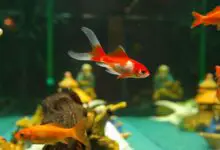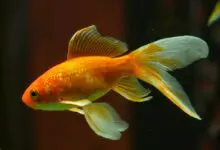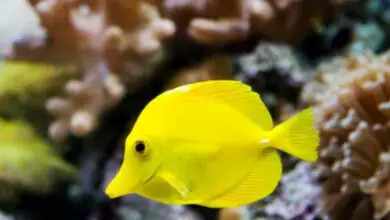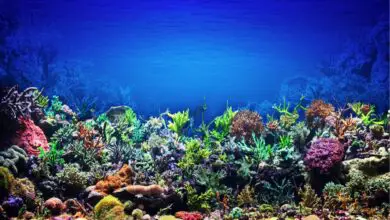15 Symptoms Aquarium Owners Should Watch For

Watching fish closely prevents little issues from becoming big disasters. Even better, fixing small problems keeps the whole tank healthy long-term.
Let’s review easy health clues and basic care steps anyone can follow. No fancy fish doctoring required!
Lethargy & Loss of Appetite
Active fish that start acting sleepy and ignore food need help. These two basic signs mean something is wrong.
Causes
A wide range of illnesses cause lethargy and appetite loss. Bacterial infections, parasites, bad water, even constipation restrict normal behavior.
First step is testing water quality. Poor conditions directly cause most fish sickness.
Ammonia and nitrite poising come from waste buildups. Quick water changes get fresh water flowing again.
If conditions check out, examine fish carefully head to tail with magnifying glass. Look extremely close near gills and fins for tiny white specks signaling parasites or fungus.
Helping Sick Fish
Sick fish struggle reaching the water surface. Boost aeration so oxygen circulates deeper using air pump and stone. Position near the bottom.
Try tempting with juicy treats like brine shrimp or mosquito larvae. Switch foods sometimes too. Offer a pea-sized bite on a spoon even!
Work gently and slowly. Dramatic changes add more stress to already sick fish. Getting back appetite means health is rebounding!
Discoloration
We know our fish by heart. Unusual colors or darkening fins demand a closer look.
Causes
Discoloration results from multiple common aquarium issues. Take notes on where color changes and what exactly looks different. This helps identify the underlying problem.
First check ammonia levels if whole bodies seem pale or dark. High toxicity affects bodily function fast. Big water changes flush fresh water through gills immediately.
Strange dark patches could indicate bacterial or fungal infections. These spread quickly without antibiotics or antifungals from pet store.
Another common culprit is Ich parasite or velvet disease. Like grains of salt or dusty gold metallic coatings signal dangerous outbreaks requiring medications. Remove carbon filters first so meds absorb fully.
If only the tips of fins look blackened, test for elevated nitrite. Do an extra gravel vacuum to remove waste feeding sharp levels.
Spotting & Discoloration
Dark dots mean bacteria or fungi took hold. Luckily home treatment helps avoid harsh medications.
Causes
Spots and discolored patches result from pathogen attacks on weakened fish. Injuries to skin or fins allow nasty bacteria in. Poor water wears down fish defenses further.
Carefully observe exactly where and how markings appear. Ragged edges signal fin rot decay. Cottony tufts attaching signal severe fungal attacks.
Torn fins turn white initially as immune system rushes healing cells to wounds. Quick healing prevent infections gaining footholds!
Healing Remedies
Natural approaches help fight external fungus and early fin infections gently.
First eliminate threats weakening fish like ammonia and nitrites. Test and change water to refresh environments.
Salt and heat together fight many common external issues. Table salt (no iodine) at 1-2 teaspoons per gallon helps injured tissue heal while stopping germs.
Slowly raise temperatures to 84°F over 6 hours. Maintain salt and heat 5-7 days with partial water swaps daily. Avoid rapid changes!
We can support sick fish powerfully with small easy steps at the first signs of trouble before big medication interventions become necessary!
Labored Breathing
Fish gulp at the surface or seem to work hard pumping gills signals emergency issues below.
Causes
Labored abnormal breathing means life support systems are failing fast!
With water flows disrupted or bodies poisoned by waste gases, fish physically can’t extract enough oxygen. Laying near outflows or surface gasping provides temporary relief from suffocation.
Skyhigh ammonia is the most common culprit. Chlorine, nitrite, even CO2 buildups also burn delicate gills and deny oxygen uptake across slim membranes.
First Response
Fix situations immediately by changing 50% or more water volume to eliminate toxins fast. Blast extra airstones positioned close to the bottom too. These supply emergency ventilation when poisoning occurs.
Check ammonia and nitrite levels with test kit. Perform followup water swaps daily until both read zero again. Add Amquel Plus to detoxify any lingering threats too.
With clean flows restored and bonus aeration, distressed fish finally breath easy again!
Clamped Fins
Healthy happy fish fully flare elaborate fins. Clamped tight against the body signals chronic stress.
Causes
While clamping sometimes results directly from bullying or aggression, more often water quality factors are ultimately responsible.
Poor nutrition, improper temperatures, pH swings, uncontrolled ammonia and nitrites make homeostasis extra challenging. To conserve energies fish clamp fins tight. But long term threats still linger!
Clamped fins also occur alongsideowner illnesses as initial immune responses kick in. Spot other symptoms too like appetite loss or flashing before infection agentsconcentrate locally. Then treat root causes gently.
Reducing Stressors
Combat stressors weakening fish across the board first. Test and reset all parameters to species appropriate ranges if needed through water swaps.
Boost aerationand circulation pumps on timers with preset durations. Introduce more plants as natural filters too. Consider moving non aggressive fish to isolation tanks during treatment if known bullies seem responsible.
With comfort restored, fins relax and color returns. Clamping should never be dismissed as normal but rather addressed pronto!
Cloudy Eyes
White foggy eyes signal bacterial issue brewing along delicate optic tissues. If ignored often leads to blindness permanently.
Causes
Cloudy eyes result from opportunist bacterial taking advantage compromised fish. Early on eye clouding stems from fluid releases triggered by immune response inflammations. These help flush pathogens but make eyes appear hazy.
Left unchecked, secondary eye infections embed behind lenses blinding fish permanently. Spotting the initial immune response cues before bacteria concentrate provides a vital window for reversing damages gently.
Underlying reasons like bullying, poor conditions or injuries enable disease agents attacking eyes specifically. Solve these first then clear infections.
First Aid Treatment
Treat initial cases using aquarium salt baths, darkness, and TLC nutrition. Salt dips pull fluids drying eyes while toughing skin against germs establishment. Sustained vitamin-rich foods fuel healing processes too.
And provide deeply shaded spaces so eyes rest while immune systems rally. Stress blocking vision loss if complications already emerged. But even advanced cases sometimes improve if infections avoided originally!
Cottony Growths on Body
Cotton ball tufts sprouting on bodies or face signal dangerous fungal attacks requiring quick response. These nasty external infections embed deeply fast.
Causes
While many fungus varieties sporulate naturally in tanks, healthy fish resist heavy growths. But injuries, stress or age again limit defenses allowing cottony colonies establishing on vulnerable tissues.
Unfortunately once advanced growths occurred, medications become necessary stopping thick fungal mats smothering fish. Treat quickly within first hours observing initial fuzz!
Treatment Options
Commercial anti-fungal chemicals work best against already sprouted growths. Combined with aquarium salt dips, remove carbon filtration to maximize medicine concentrations.
Follow product dosing instructions precisely and complete full treatment courses even if fungus disappears earlier to eradicate embedded spores entirely. Usually requires 7-14 days of diligence!
With medications and salt baths applied quickly, external fungal infections resolve readily before taking deadly turns if ignored too long. Stay vigilant saving friends!
White Spot Disease
Perhaps most infamously, sprinkling of tiny white grains across fish signals a parasitic ich outbreak emerging. These spots multiply insanely fast!
Causes & Life Cycle
Ick parasites naturally occur in small numbers as free swimmers searching hosts. Given the opportunity they penetrate skin and gills, building protective cysts as defenses while reproducing. Rupturing cysts unleash hundreds of offspring reinfecting tanks in ongoing cycles.
Fish flashing and breathing distress plus salt grain protrusions confirm parasites concentrated majorly. Intervene immediately before parasite loads overwhelm fish!
Treatment Tips
Several approaches help defeat ich but must be combined for success. No solitary cure exists, making quarantining newfish and plants critical preventing introductions also.
First raise temperatures toward 86°F gradually over 6 hours. Warmer waters speed parasite growth cycles interrupting reproduction phases.
Combine heat with aquarium salt at 1 tablespoon per 5 gallons. Salt grains help fish slough off parasites before life stages embed within skin and gills. Plus boosted slime coats prevent reinfection.
Lastly medications containing formalin or malachite green kill exposed parasites directly. Remove carbon filters before applying. Complete full courses carefully.
With heat, salt and meds deployed simultaneously, ich infestations clear within 5-7 days stopping spread. Stay vigilant notifying new fish also for quarantine periods preventing hitchhiking parasites!
Bloated Abdomen
A too-full belly signals dire issues in fish health unless very well fed! Learn proper anatomy and react to radical bloating fast.
Constipation vs Dropsy
Moderate bloating occurs commonly from constipation in overfed fish. Reduce feeding amounts and offer parboiled shelled peas to relieve and firm waste. Fasting days help too.
But pineapple-spiked scales protruding drastically from a swollen belly indicates deadly dropsy disease instead. Here parasites or kidney infections fill body cavities with fluids ballooning fish dangerously.
Dropsy proves difficult to cure once reached advanced stages with scales raised. But early intervention wins survival races!
Winning the Race
Treat initial dropsy by immersing fish in an Epsom salt bath carefully monitored to reduce swelling by drawing fluids outward gently. 1-2 teaspoons mixed per gallon works well over 20 minutes before returning fish to freshwater recovery tank.
Combine immersion therapy with antibiotics treating underlying bacterial infections and parasites like Kanaplex or metronidazole dosed carefully per package instructions. Support breathing with added airstones also until swelling resides.
Routine Epsom salt hydration helps constipation cases too by flushing waste naturally. And feeding live or gel foods often restarts systems gently preventing repeat issues down the road!
Flashing & Twitching
Itchy fish rubbing against objects could indicate nasty parasites invitation behind skin and gills. React quickly before problems spread!
Causes
Flashing and twitching results from irritation by external parasites like flukes, ich and velvet protozoans establishing on fish. Visible clues like spots and gold dusting sometimes accompany parasite attacks.
But subtle flashing hints alone should raise red flags to examine fish extremely closely under magnification for emerging issues and treat accordingly before exponential reproductions crash tanks. Exercise zero tolerance policies!
Treatments
Several specialty medications kill external parasites through contact absorption without overly harming fish when carefully dosed. Choose remedies matching observed symptoms for maximum effectiveness minimizing exposures.
Combining aquarium salt also helps fish slough parasites before attachment phases by building protective slime barriers. Boost temperatures toward 80°F to quicken life cycles too. This triple play executes parasites effectively when initiated ASAP once hinting clues first arise!
Let flashing and twitching behaviors guide observant aquarists spotting stealth parasites early saving tanks from devastating crashes if left multiplying freely! Healthy fish never itch without reasons.
Floating Sideways/Standing Vertically
While swim bladder issues present differently across fish species, clockwise corkscrewing, floating upside down, and head or tail standing vertically all indicate problems similarly.
Causes
Swim bladders fill with gases fine tuning internal ballast systems allowing smooth diving and rising. Much like balloons inflating and deflating regulate vertical motions.When injuries, inflammations or obstructions occur fish literally lose control of buoyancy.
Common causes include gulping air when stressed or nerve damage from poor water conditions. Overfeeding bloating presses organs also. Even parasites and bacterial kidney infections severely disrupt delicate gas exchange and pressure sensory organs governing swim bladders ultimately.
Helping Fish Upright
Regardless exact causes, treatments focus on easing symptoms gently while fixing underlying issues. Small feeds of skinned green peas add fiber clearing digestive obstructions and associated swelling pressing bladders.
In worse case scenarios vets actually drain excess gases from swim chambers using syringes giving organs room to self correct ultimately. But simple steps like peas, clean water and salt baths work immediately for initial mild cases luckily!
Reddened Gills & Venting
Flared gills with increased venting signals toxicity issues make breathing very taxing. React quickly reducing threats!
Causes
While healthy fish absorb considerable oxygen across vascularized gills constantly, contaminated water chokes processes fast. Ammonia, nitrite, metals and chlorines burning delicate tissues means less gases enter bloodstream.
Heavily increased efforts visibly moving gill structures shows fish fighting for sufficient air against water toxicity likely creeping upward. Don’t disregard distress behaviors!
Solutions
Get fresh water flowing immediately through large scale water changes if gills redden or pumping rates escalate. Remove chemical sources and exchange half or more volume to dilute issues.
Dose ammonia neutralizer like Prime also binding remaining traces, then recheck levels hourly. Never mix tap water carrying chlorine without dechlorinator when toxicity present!
Lastly agitate surface films with air stone releasing more dissolved gases from water column. Venting should slowly normalize as pollution decreased and fresh oxygen provided. Just takes supportive care and patience!
Fins Red & Inflamed
Reddish irritated fins indicate infections but precisely pinpointing causes takes investigations eliminating possible explanations. Start interventions immediately regardless!
Causes
Fin conditions result from many origins unfortunately including injuries, poor water chemistry, bullying and aggressive fin nipping tankmates introducing diseases, even genetic predispositions towards tissue issues.
Consider all recent changes possibly contributing like introducing new tankmates or environment parameter shifts. Review diets too. Then match symptoms and where on fins first impacted with common pathogens’ telltale traits under magnification if available. Treat accordingly.
Healing Aids
Support natural healing processes aggressively once eliminating possible root triggers. Add leaf tannins restorative properties with Indian almond preparations or botanical extracts like StressCoat binding wounds while blocking opportunistic bacteria.
Extra vitamin-rich feeding fuels regeneration also. And carefully monitoring water parameters maintains ideal healing conditions long term after damage occurred. With robust long term care fins bounce back quickly!
No shortcuts exist healing delicate fins unfortunately. But diligently supporting fish with improved husbandry avoids practically any infection gaining devastating footholds down the road! Remember, prevention always easiest medicine!
Conclusion
By recognizing common environmental and symptom clues signaling sickness early, aquarists gain massive head starts intervening correctively before fish decline too devastatingly. But dont rely solely on reactionary measures!
Instead proactively buildAquatic habitats balanced physically and biologically from day one. This prevents 90% of common issues even arising rather than battling back from brink always.
Test water parameters like clockwork catching fluctuations quickly. Quarantine newcomers properly too. Choose tank sizes suiting inhabitants lifetime space needs also. And research care requirements fully per exact species before acquiring fish. Setting systems up for success avoids practically any health struggles ahead!
Stay diligent observing fish daily. At first signs of trouble like lethargy or clamped demeanor test water flows. Then initiate gentle supportive care remedies restoring comfort, cleanliness and calmness minimally stressful as possible. Health bounces back given amazing fish resilience and home aquaria advantages supporting lives fully!
